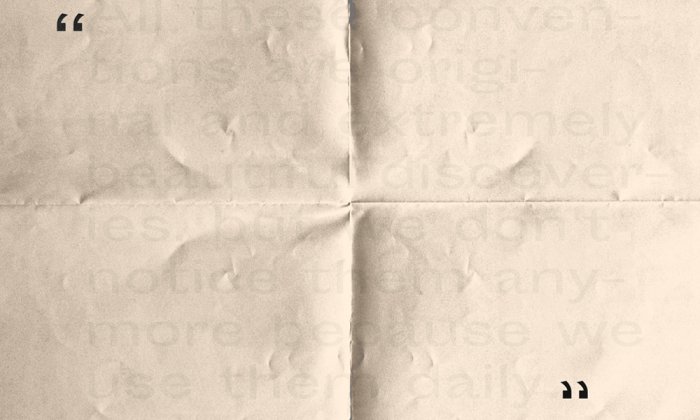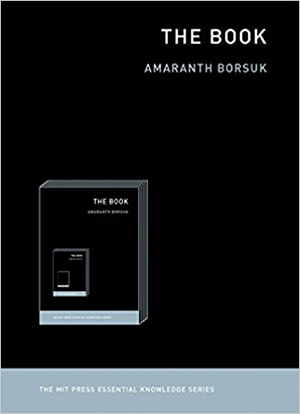The New Art of Making Books

The ubiquity of the book as a marketable artifact led Mexican author and artist Ulises Carrión (1941–1989) to write rebelliously in 1975, “A book may be the accidental container of a text, the structure of which is irrelevant to the book: these are the books of bookshops and libraries.” We have to imagine a long pause where that colon hinges the sentence together — one heavy with sarcasm.

Carrión’s tongue-in-cheek dig at the book as a commercial artifact reflects on the separation of form and content he perceived in the writing and publishing of his time. Carrión was not opposed to bookshops altogether, and in fact founded one himself, Other Books and So, in Amsterdam that same year. Specializing in artists’ books and multiples, the shop was also an artist-run exhibition and event space that distributed the kind of work he wanted to see more of in the world: books conceived of as a whole, rather than “texts” bestowed by the author on a publisher for dissemination to a reading public. In an advertisement for the space, he called them “non books, anti books, pseudo books, quasi books, concrete books, visual books, conceptual books, structural books, project books, statement books, instruction books,” a list suggestive of his vexed relationship with the marketplace. Ultimately, he would coin a new term to describe the kind of artists’ publications he championed: bookworks. In part, Carrión’s was a clarion call for authors to be more attuned to the book’s materiality and impact on meaning, but it was also a demand for a breakdown of the system that privileged writing as intellectual labor and denigrated the physical aspect of book production.
Carrión perceived a crisis in literature, and for him that crisis arose from its place in the publishing system.
Carrión perceived a crisis in literature, and for him that crisis arose from its place in the publishing system. He knew this system firsthand, having achieved early success by winning the state prize for short stories in 1960, publishing work in periodicals, and ultimately releasing two successful story collections, in 1966 and 1970. Carrión had studied literature and philosophy at UNAM, and he gained enough acclaim to receive grants for graduate study in France, Germany, and the United Kingdom. While in England he began to envision a different approach to the book and publishing, thanks to Mexican artists Felipe Ehrenberg and Martha Hellion, whose Beau Geste Press (founded in 1970) introduced him to mimeographed books by members of Fluxus, a loose collective of artists interested in chance operations, ephemeral performances, conceptual practice, and participatory works that blur the line between art and life. When he moved to Amsterdam in 1972, Carrión began producing artists’ books of his own, the first of which, “Sonnets,” provided 44 iterations of Dante Gabriel Rossetti’s “Heart’s Compass.” In the manner of Raymond Queneau’s “Exercises in Style” (1947), Carrión played with his source text, rewriting it in different styles to amusing ends. It was in this context of experimentation with poetry, and a move from narrative toward conceptual art, that Carrión began to formulate the notion of the bookwork.
Demanding that writers take a more active role in the conceptualization of their books, he published “The New Art of Making Books” (1975), a manifesto whose polemical tone served as a provocation that still irks some readers today. Originally written in Spanish and published in Plural, the magazine founded by Octavio Paz, it was aimed at a literary audience Carrión felt needed a jolt. Disavowing the novel as “a book where nothing happens,” and proclaiming “there is not and will not be new literature anymore,” he clearly hoped to ruffle feathers. The novel, of course, is not dead, and it still serves an important expressive purpose, but Carrión’s reenvisioning of the capacities of the book show us much about the ways artists’ books have helped multiply its possibilities by treating the book as an intermedial space.
Like Stéphane Mallarmé before him, Carrión saw the page’s spatial potential. His manifesto opens, “A book is a sequence of spaces,” a definition so porous as to allow for any number of objects or artifacts we might think of as books: a bound codex, a deck of cards, or a series of rooms. But his definition stretches still further:
Each of these spaces is perceived at a different moment—a book is also a sequence of moments.
• • • •
A book is not a case of words, nor a bag of words, nor a bearer of words.
• • • •
… A book is a space-time sequence.
If a book is a space-time sequence, it is also a kind of film. It can be animated, rather than static. By the time Carrión penned this statement, creators of flip-books and their precursor, the nickelodeon, had exploited this aspect of the book’s sequential potential for just over a century (the flip-book having been patented in 1868 by John Barnes Linnett as the kineograph). This notion, though, that the page is more than simply “a bag of words” suggests that writers must stop treating language as transparent, utilitarian, and direct. Only in the old art could one believe “the meanings of the words are the bearers of the author’s intentions.” Clearly, Carrión’s thinking bears the hallmarks of poststructural theory, which by this point had shaken up notions of meaning and authorship.
In lieu of such “boring” books “of 500 pages, or of 100, or even of 25 wherein all the pages are similar,” Carrión called for books “conceived as an expressive unity,” as he would write in a 1978 exhibition catalog. While calling pages of justified prose “boring” sounds purposefully bombastic, we ought to consider the role page numbers and running heads play in facilitating reading and revisiting a work. These signposts help us navigate a text that looks the same from page to page, though its words may vary. “In a bookwork,” by Carrión’s definition, “the message is the sum of all the material and formal elements.” The bookwork, thus, engages in a critique of the book and an exploration of its affordances. It takes nothing at face value and asks the reader to remain attentive not only to the text but also to its physicality. As scholar Garrett Stewart writes, a bookwork is “not for normal reading, but for thinking about.” It represents a conceptual approach to bookmaking, and one that relies on the viewer’s interaction with the object to make meaning. For this reason Carrión called such works “anti books” — because they refuse the book’s function while interrogating its form, separating the idea of the book from the object.
Sounding a death knell for books that has since become a refrain, Carrión suggests that bookworks take on greater importance when the codex itself seems to be imperiled.
In a 1986 video recorded in Olympia, Washington, where Carrión was to speak at The Evergreen State College, he professes a perspective common today, “I firmly believe that every book that now exists will eventually disappear.” And true to form, he expresses little sadness over the loss: “And I see here no reason for lamentation. Like any other living organism, books will grow, multiply, change color, and, eventually, die. At the moment, bookworks represent the final phase of this irrevocable process. Libraries, museums, archives are the perfect cemeteries for books.”
Sounding a death knell for books that has since become a refrain, Carrión suggests that bookworks take on greater importance when the codex itself seems to be imperiled. This feels especially true at our current moment, when publishers are taking greater risks with artistic publications and conceptually inventive books like Jonathan Safran Foer’s die-cut erasure “Tree of Codes” (Visual Editions, 2010), Mark Danielewski’s typographically complex “House of Leaves” (Pantheon, 2000), Anne Carson’s accordion-bound “Nox” (New Directions, 2010), and Jen Bervin’s collection of Emily Dickinson’s envelope fragments, “Gorgeous Nothings” (New Directions, 2013), a volume that feels like a coffee-table book. As the material form of the codex threatens to disintegrate into the digital, works highly attuned to materiality give us a chance to think about and savor the physical artifact, precisely by asking us to reflect on the very immaterial “idea” of the book.
Amaranth Borsuk is Associate Professor in the School of Interdisciplinary Arts and Sciences at the University of Washington Bothell, where she also teaches in the MFA in Creative Writing and Poetics. She is the author of “The Book,” from which this article is excerpted, “Between Page and Screen,” a digital pop-up book of poetry, and other hybrid print/digital books.




